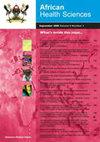Epidemiological features of tuberculosis in the Middle East and North Africa from 1990 to 2019: results from the global burden of disease Study 2019
IF 0.9
4区 医学
Q3 MEDICINE, GENERAL & INTERNAL
引用次数: 0
Abstract
Introduction: Tuberculosis (TB) is a preventable and curable disease, although, it still causes more than one million deaths annually. Therefore, the aim of this study was to measure the epidemiological status and the burden of TB in the Middle East and North Africa (MENA) countries. Methods: The study population included 21 countries in the MENA region, covering a population of about 400 million. The Global Burden of Disease (GBD) 2019 database was used. The case definition comprises all forms of TB, containing pulmonary and extra pulmonary TB, which are bacteriologically approved or clinically diagnosed. The prevalence, incidence, death, and the disability-adjusted life years (DALYs) rates per 100,000 people for all national locations by standardized age rates (ASR) were measured. Results: In 2019, Afghanistan had the highest TB-related incidence 85.09 (95% UI, 73.69_98.46), death 21.91 (95% UI, 13.44_29.78), and DALYs rate 695.21 (95% UI, 454.34_939.49). The highest prevalence rates of TB were in Egypt 28935.42 (95% UI, 26125.54_32251.01). The highest TB-related DALYs rate was attributed to alcohol use, high fasting plasma glucose, and smoking were related to Tunisia, Qatar, and Lebanon, respectively. Between 1990 and 2019, TB- related incidence, prevalence, death, and DALYs rate have decreased by 53%, 42.19%, 76.20%, and 75.95% in MENA region, respectively. Conclusion: TB has continued to decrease in prevalence, incidence, death, and DALYs rates in the MENA region, although, nowadays with the COVID-19 pandemic, societies may face more challenges for TB prevention, detection, treatment, and rehabilitation. Keywords: Tuberculosis; disability; burden of disease; DALY; MENA.1990年至2019年中东和北非结核病的流行病学特征:2019年全球疾病负担研究结果
简介:结核病是一种可预防和可治愈的疾病,尽管它每年仍造成100多万人死亡。因此,本研究的目的是测量中东和北非(MENA)国家的结核病流行病学状况和负担。方法:研究人群包括中东和北非地区的21个国家,覆盖人口约4亿。使用了2019年全球疾病负担(GBD)数据库。病例定义包括所有形式的结核病,包括细菌学上批准或临床诊断的肺结核和肺外结核。通过标准化年龄率(ASR)测量所有国家地区每10万人的患病率、发病率、死亡率和残疾调整生命年(DALYs)率。
结果:2019年阿富汗结核病相关发病率最高,为85.09 (95% UI, 73.69_98.46),死亡率最高,为21.91 (95% UI, 13.44_29.78), DALYs率最高,为695.21 (95% UI, 454.34_939.49)。埃及肺结核患病率最高,为28935.42 (95% UI, 26125.54_32251.01)。与结核病相关的DALYs率最高的分别是饮酒、空腹血糖高和吸烟,这些国家分别与突尼斯、卡塔尔和黎巴嫩有关。1990年至2019年,中东和北非地区结核病相关发病率、患病率、死亡率和DALYs率分别下降了53%、42.19%、76.20%和75.95%。结论:结核病在中东和北非地区的患病率、发病率、死亡率和DALYs率持续下降,尽管随着COVID-19大流行,社会在结核病预防、检测、治疗和康复方面可能面临更多挑战。关键词:结核病;残疾;疾病负担;戴利;中东和北非地区。
本文章由计算机程序翻译,如有差异,请以英文原文为准。
求助全文
约1分钟内获得全文
求助全文
来源期刊

African Health Sciences
MEDICINE, GENERAL & INTERNAL-
CiteScore
2.30
自引率
0.00%
发文量
179
审稿时长
>12 weeks
期刊介绍:
The African Health Sciences is an internationally refereed journal publishing original articles on research, clinical practice, public health, policy, planning, implementation and evaluation, in the health and related sciences relevant to Africa and the tropics. Its objectives are to: Advocate for and promote the growth of reading culture in sub Saharan Africa; Provide a high quality journal in which health and policy and other researchers and practitioners in the region can and world wide, can publish their work; Promote relevant health system research and publication in the region including alternative means of health care financing, the burden of and solution of health problems in marginalized urban and rural communities amongst the displaced and others affected by conflict; Promote research and the systematic collection and collation and publication of data on diseases and conditions of equity and influence; Promote development of evidence-based policies and guidelines for clinical, public health and other practitioners. African Health Sciences acknowledges support provided by the African Health Journals Partnership Project that is funded by the US National Institutes of Health (through the National Library of Medicine and the Fogarty International Center) and facilitated by the Council of Science Editors.
 求助内容:
求助内容: 应助结果提醒方式:
应助结果提醒方式:


